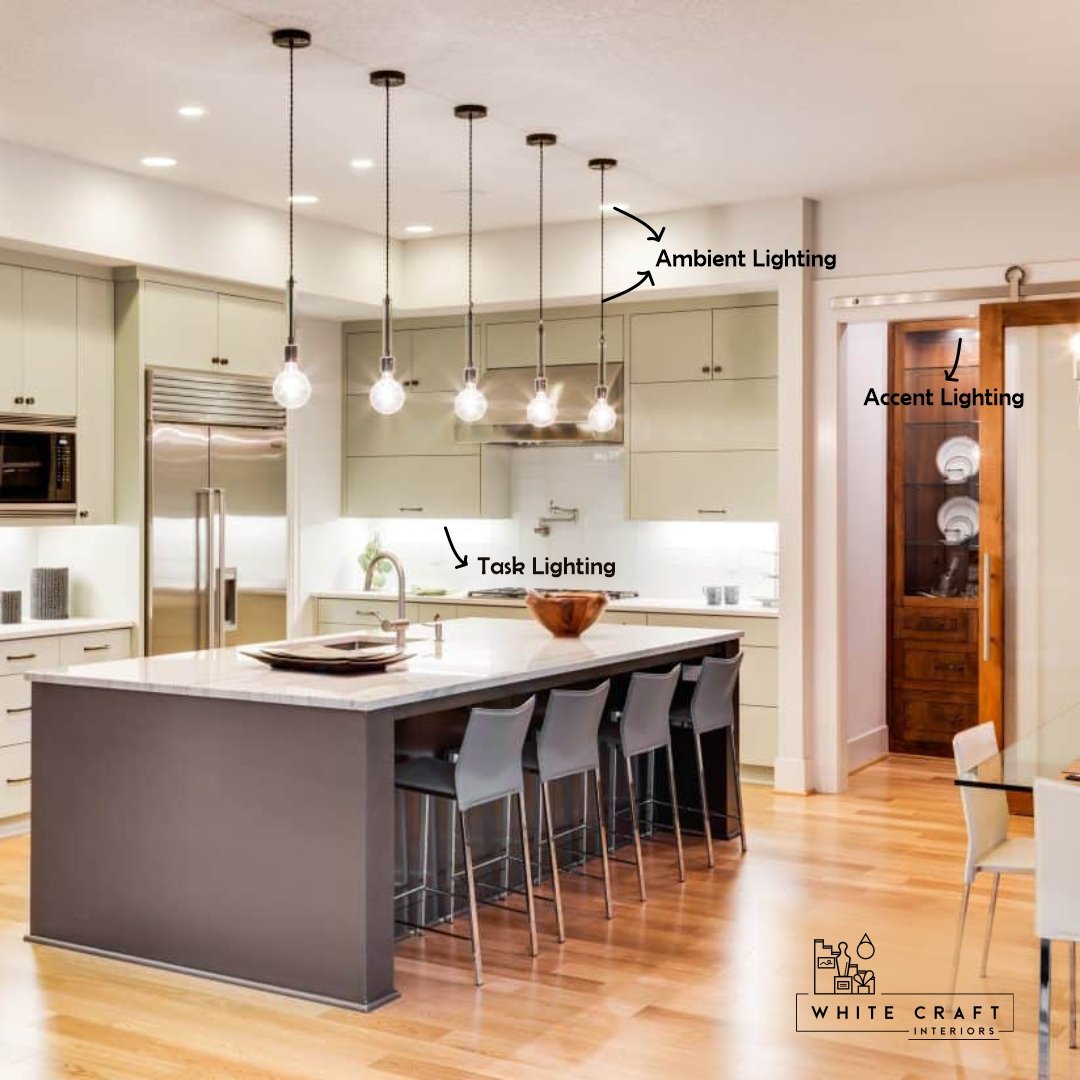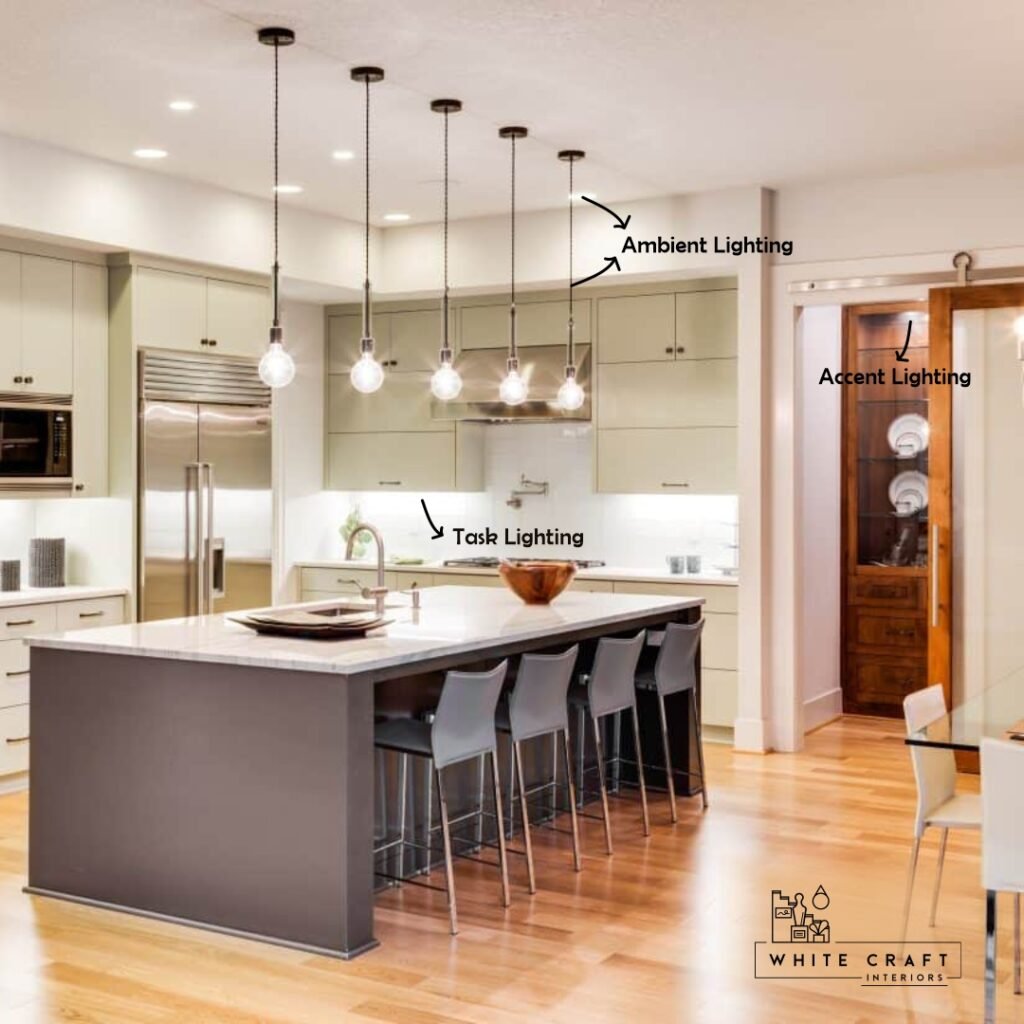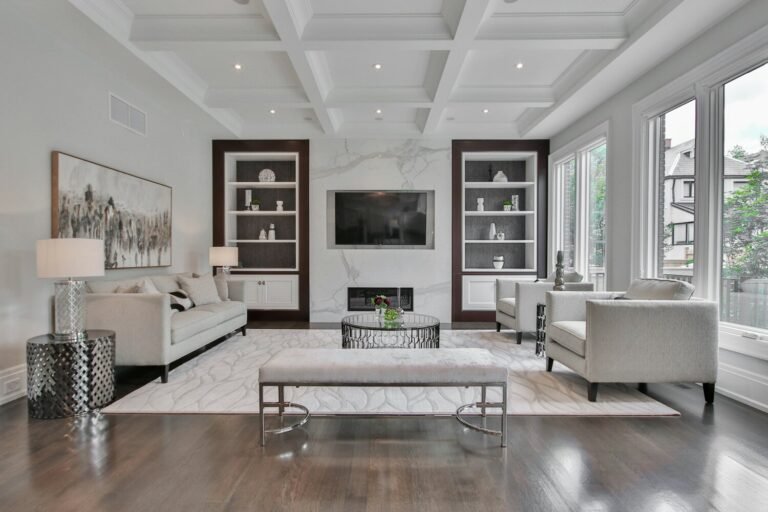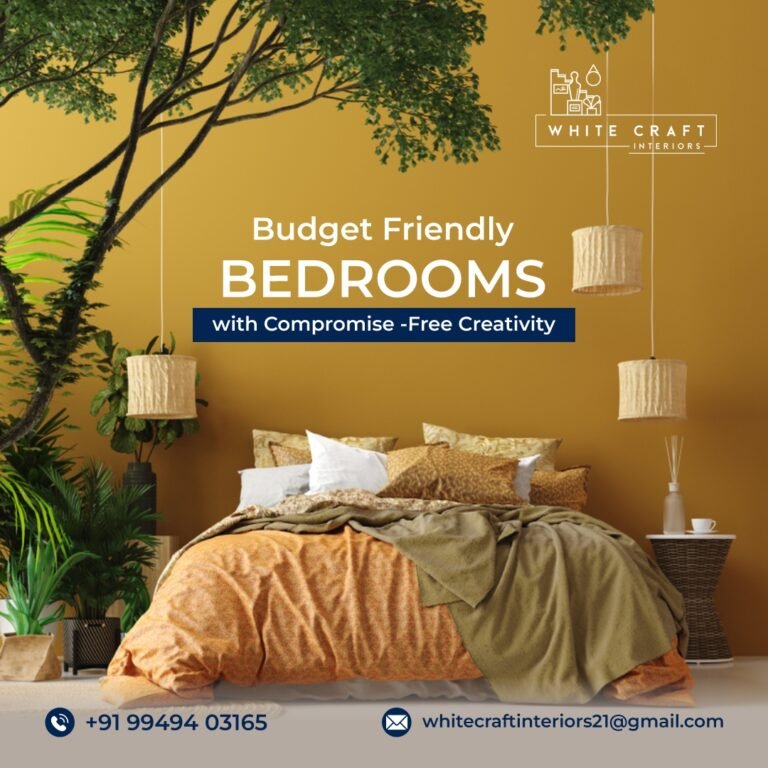How to Use Lighting to Transform Any Room

How to Use Lighting to Transform Any Room.Lighting is one of the most capable instruments in the inside plan, able to drastically change the see and feel of any room. From setting the temperament to highlighting building highlights, the right lighting can upgrade the tasteful request and usefulness of your space. In this comprehensive direct, we’ll investigate different lighting procedures and tips to offer assistance when you utilise lighting successfully to lift your home’s insides plan. Whether you’re looking to brighten up a dull corner or make a cosy vibe, this direct has got you covered. Interior design Firms in Hyderabad.
How to Use Lighting to Transform Any Room:
1. Understanding Lighting Types
Ambient Lighting
What is Encompassing Lighting?
Ambient lighting, moreover known as common lighting, generally brightens a room. It guarantees that spaces are equally lit and makes a difference to diminish eye strain.
Benefits:
Uniform Light: Makes a comfortable level of brightness all through the room.
Foundation Lighting: Serves as the base layer of light upon which other lighting sorts are built.
Versatility: Appropriate for all sorts of rooms and settings.
Examples: Ceiling-mounted fixtures, Recessed lighting, Chandeliers
Ideal For:
Living Rooms: Gives indeed brightening and sets the arrangement for other lighting layers.
Kitchens: Guarantees a well-lit working environment.
Task Lighting
What is Errand Lighting?
How to Use Lighting to Transform Any Room.
Task lighting is centred lighting that gives brightening for particular assignments, such as perusing, cooking, or working. It decreases strain and improves functionality.
Benefits:
Focused Brightening: Straightforwardly lights the zone where errands are performed.
Improves Perceivability: Guarantees that work zones are well-lit for way better efficiency and safety.
Flexibility: Can be balanced or situated agreeing to needs.
Examples: Desk lamps, Under-cabinet lighting, Adjustable pendant lights
Ideal For:
Home Workplaces: Gives centred light for work and study.
Kitchens: Lights up countertops and workspaces for superior visibility. Top10 Interior designers in Hyderabad
Accent Lighting
What is Complement Lighting?
Accent lighting is utilised to highlight particular highlights or zones inside a room, including visual intrigue and profundity to your space.
Benefits:
Highlight Highlights: Draws consideration to craftsmanship, structural components, or embellishing items.
Creates Environment: Includes a layer of dramatisation and sophistication.
Adds Profundity: Gives a sense of measurement and layering.
Examples: Wall sconces, Spotlights, Picture lights
Ideal For:
Art Exhibitions: Highlights work of art and sculptures.
Living Rooms: Upgrades building subtle elements and enhancing elements.

Decorative Lighting
What is Embellishing Lighting?
Decorative lighting centres on the aesthetics of the light installation itself, frequently serving as a central point or articulation piece in the room.
Benefits:
Aesthetic Offer: Includes a one of a kind and smart component to the decor.
Design Center: Can be a centrepiece or discussion starter.
Variety: Comes in various styles and plans to coordinate any decor.
Examples: Statement chandeliers, Artistic light fixtures, Sculptural lamps
Ideal For:
Dining Rooms: Includes class and fashion to the feasting area.
Entryways: Makes a vital impression to begin with.
2. Layering Your Lighting
What is Layering?
Layering includes utilising diverse sorts of lighting in a room to make an adjusted and flexible lighting plot. By combining encompassing, errand, highlight, and enriching lighting, you can upgrade the usefulness and vibe of your space.
Benefits:
Flexibility: Permits you to alter lighting agreeing to different exercises and moods.
Enhanced Climate: Makes profundity and intrigued through changed light sources.
Improved Usefulness: Addresses distinctive lighting needs and upgrades usability.
How to Layer Lighting
2.1. Combine Encompassing and Errand Lighting
Example:
Living Room: Utilise overhead ceiling lights for common light (surrounding) and include floor lights or table lights for perusing and unwinding (task).
Benefits:
Versatile Utilise: Gives in general light and particular lighting for activities.
Adjustable: Permits for distinctive lighting scenarios based on needs.
2.2. Coordinated Complement Lighting
Example:
Dining Range: Introduce a pendant light over the feasting table (assignment) and utilise divider sconces to highlight work of art or building highlights (accent).
Benefits:
Highlight Highlights: Draws consideration to particular regions or objects.
Creates Climate: Includes a layer of visual interest.
2.3. Consolidate Enriching Lighting
Example:
Bedroom: Utilise an in vogue chandelier or pendant light as a centrepiece (enriching), combined with bedside lights (errand) and recessed lights (ambient).
Benefits:
Design Articulation: Includes an interesting component to the room’s decor.
Functional Layers: Complements other sorts of lighting.
3. Choosing the Right Fixtures
What to Consider
3.1. Room Measure and Layout
How to Choose:
Small Rooms: Select for compact installations like divider sconces or pendant lights.
Large Rooms: Consider chandeliers or different light sources to guarantee satisfactory coverage.
Benefits:
Proportional Lighting: Guarantees that the installation fits the scale of the room.
Effective Light: Gives adequate lighting based on room size.
3.2. Fashion and Design
How to Choose:
Modern Contribute: Smooth, moderate installations like Driven downlights or geometric pendants.
Traditional Stylistic layout: Lavish chandeliers or classic table lamps.
Benefits:
Aesthetic Agreement: Matches the room’s by and large plan style.
Design Cohesion: Makes a bound together look.
3.3. Usefulness and Purpose
How to Choose:
Task Zones: Flexible work area lights or under-cabinet lighting for centred illumination.
Ambient Spaces: Ceiling-mounted installations or recessed lights for common lighting.
Benefits:
Enhanced Convenience: Gives fitting lighting for distinctive assignments and activities.
Effective Execution: Guarantees that lighting meets utilitarian needs.
4. Executing Energy-Efficient Lighting
What is Energy-Efficient Lighting?
Energy-efficient lighting employs innovation that expends less vitality whereas giving the same sum of light as conventional alternatives. It makes a difference in decreasing vitality bills and natural impact.
Benefits:
Cost Reserve funds: Lower vitality utilisation leads to decreased power bills.
Environmental Effect: Decreases carbon impression and underpins sustainability.
Longevity: Energy-efficient bulbs regularly final longer, diminishing substitution frequency.
Types of Energy-Efficient Lighting
4.1. Driven Lighting
What is Driven Lighting?
LED (Light Radiating Diode) lighting is known for its vitality, productivity and long life expectancy. It’s accessible in different colours and brightness levels.
Benefits:
High Effectiveness: Employments up to 80% less vitality than conventional glowing bulbs.
Longevity: Can last up to 25,000 hours or more.
Low Warm Emanation: Diminishes warm yield, making it more secure and cooler.
Ideal For:
All Rooms: Appropriate for common, assignment, and complement lighting.
4.2. CFL Lighting
What is CFL Lighting?
CFL (Compact Fluorescent Light) lighting is another energy-efficient alternative that employs less control than radiant bulbs and endures longer.
Benefits:
Energy Investment funds: Employments around 70% less vitality than glowing bulbs.
Extended Life: Ordinarily endures 8-10 times longer than conventional bulbs.
Ideal For:
General Brightening: Awesome for encompassing lighting in different rooms.
4.3. Shrewd Lighting
What is Savvy Lighting?
Smart lighting frameworks permit you to control your lights remotely utilising smartphones or voice commands, and they regularly incorporate energy-saving highlights like darkening and scheduling.
Benefits:
Convenience: Control lighting remotely and set schedules.
Energy Effectiveness: Alter brightness and timing to diminish vitality use.
Customizability: Make personalised lighting scenes and moods.
Ideal For:
Tech-Savvy Homes: Idealize for cutting edge homes looking for progressed lighting control.
5. Tips for Viable Lighting Design
5.1. Consider Lighting Temperature
What is Lighting Temperature?
Lighting temperature alludes to the colour appearance of the light, which can extend from warm (yellowish) to cool (somewhat blue). It influences the temperament and environment of a room.
Tips:
Warm Light: Perfect for living rooms and rooms for a cosy, unwinding ambiance.
Cool Light: Best for workspaces like kitchens or domestic workplaces to improve centre and productivity.
5.2. Utilise Dimmers and Controls
What are Dimmers and Controls?
Dimmers permit you to alter the brightness of your lights, whereas controls can incorporate shrewd frameworks or remote-operated switches.
Benefits:
Adjustable Vibe: Make shifting temperaments and settings based on needs.
Energy Reserve funds: Decrease brightness to spare energy.
5.3. Position Lights Strategically
What is Vital Positioning?
Positioning lights in key ranges guarantees that they give the wanted impact, whether it’s lighting up workspaces, highlighting work of art, or making ambiance.
Tips:
Task Lighting: Put specifically over or close work areas.
Accent Lighting: Position to highlight highlights or make shadows for visual interest.
5.4. Layer Diverse Lighting Types
What is Lighting Layering?
Layering distinctive sorts of lighting (encompassing, errand, highlight, and enriching) makes an adjusted and energetic lighting scheme.
Benefits:
Versatility: Gives distinctive lighting alternatives for different exercises and moods.
Enhanced Impact: Makes profundity and intrigued in the room.
How to Use Lighting to Transform Any Room. Lighting is a pivotal component in an inside plan that can change any room when utilised viably. By understanding the distinctive sorts of lighting, layering them deliberately, choosing the right installations, and consolidating energy-efficient alternatives, you can make a space that is both utilitarian and outwardly engaging. Explore diverse lighting procedures to discover what works best for your home, and appreciate the improved climate and usefulness that well-designed lighting brings to your living spaces.







